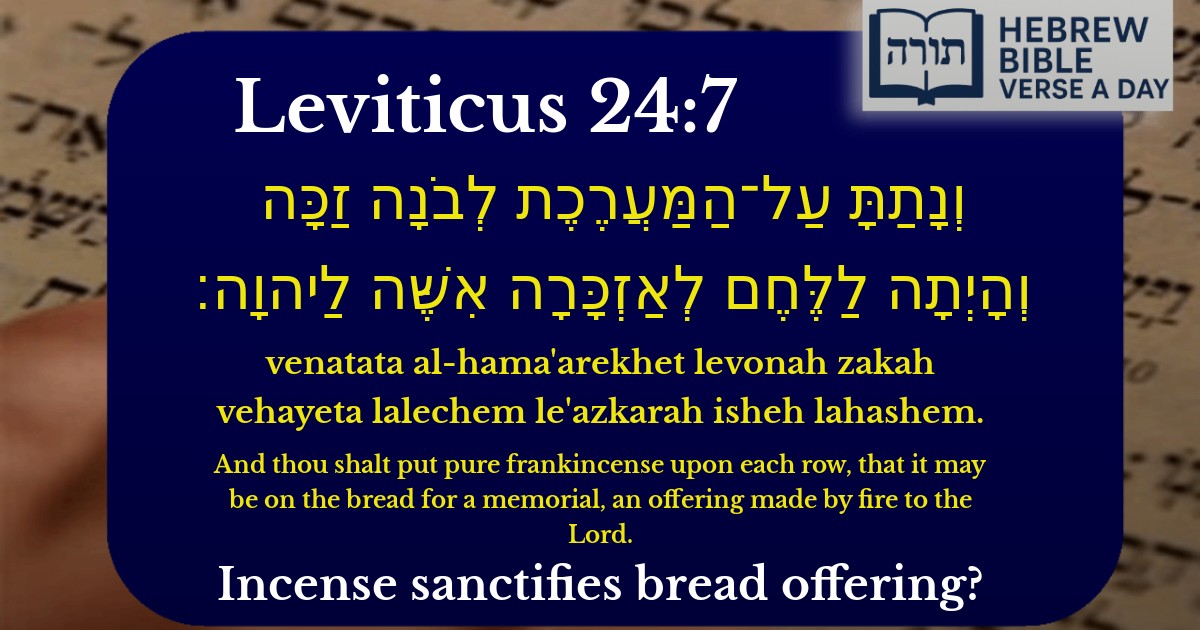Join Our Newsletter To Be Informed When New Videos Are Posted
Join the thousands of fellow Studends who rely on our videos to learn how to read the bible in Hebrew for free!
Hebrew Text
וְנָתַתָּ עַל־הַמַּעֲרֶכֶת לְבֹנָה זַכָּה וְהָיְתָה לַלֶּחֶם לְאַזְכָּרָה אִשֶּׁה לַיהוָה׃
English Translation
And thou shalt put pure frankincense upon each row, that it may be on the bread for a memorial, an offering made by fire to the Lord.
Transliteration
Venatata al-hama'arekhet levonah zakah vehayeta lalechem le'azkarah isheh lahashem.
Hebrew Leining Text
וְנָתַתָּ֥ עַל־הַֽמַּעֲרֶ֖כֶת לְבֹנָ֣ה זַכָּ֑ה וְהָיְתָ֤ה לַלֶּ֙חֶם֙ לְאַזְכָּרָ֔ה אִשֶּׁ֖ה לַֽיהֹוָֽה׃
Parasha Commentary
📚 Talmud Citations
This verse is quoted in the Talmud.
📖 Menachot 11a
The verse is discussed in the context of the preparation of the showbread (Lechem HaPanim) in the Temple, specifically regarding the placement of frankincense on the rows of bread as a memorial offering.


Context of the Verse
The verse (Vayikra 24:7) describes the mitzvah of placing pure frankincense (levonah zakah) on the rows of the Lechem HaPanim (Showbread) in the Mishkan (Tabernacle) and later in the Beit HaMikdash (Holy Temple). This was part of the weekly ritual performed by the Kohanim (priests).
Explanation of the Components
Symbolism and Deeper Meaning
The Midrash (Vayikra Rabbah 21:8) connects the frankincense to the merit of the righteous, whose deeds ascend like a pleasing fragrance before Hashem. The Lechem HaPanim represents physical sustenance, while the frankincense represents spiritual elevation. Together, they symbolize that material blessings must be sanctified and directed toward divine service.
Halachic Significance
According to the Rambam (Hilchot Temidin uMusafin 4:12), the placement of frankincense was an essential part of the mitzvah. Without it, the Lechem HaPanim was incomplete. This underscores the principle that even physical sustenance requires a spiritual component to be fully elevated.